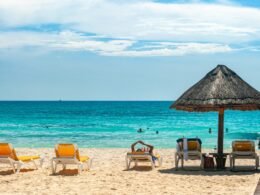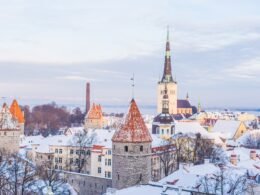The island also boasts a typical Mediterranean climate, with its hot, dry summers and warm, rainy winters. Since it’s one of the sunniest places in Europe, visitors can enjoy around 300 000 hours of sunshine each year.
So, when is the best time to visit Malta? Well, that depends on what you are looking for holiday-wise. Let’s look at Malta during the high season, shoulder season, and low season.
High season (June to August)

The high season in Malta is hot and dry, with temperatures reaching around 32 °C. This time of year sees the highest influx of visitors since it’s right in the middle of Europe’s summer holidays.
The peak season is a fabulous time to visit Malta if you want to hang out on the beaches, revel in water sports, get in on the excitement of parties galore, and catch a tan. It’s also a must for those who love to scuba and snorkel or want to hail a boat to various parts of the island, including the pristine blue lagoon.
What’s on: key events during peak season include:
• Feast of San Guzepp, and the Santissima Trinita feast. (June)
• Valletta Film Festival (June)
• Marsovin wine festival (July)
• International Arts Festival (July)
• Malta Jazz and Rock Festival (July)
• Notte Di San Lorenzo fireworks (August)
• Summer Carnival (August)
Best time for: Getting in on all the summer parties and fun and living your best beach bum life.
Top tip: Book your accommodation and attractions in advance!
Shoulder Season (March-May and September – November)

Shoulder season occurs twice a year, once between March and May (Spring) and between September and October (Autumn.) The weather is cooler in these months, making it an excellent time for those who want to hike coastal paths, traverse mountain bike trails, rock climb, or explore the island’s historical sites, museums, and cathedrals without the scorching summer sun. Shoulder season also means fewer crowds, making it an ideal time for those wanting to skip the chaos of the busy peak season.
For those who love festive cheer, April is a particularly exciting month on the island, with locals celebrating Easter in full swing. The period is steeped in centuries-old tradition, and tourists can enjoy pilgrimages, processions, and dramatic shows.
What’s on: key events during shoulder season:
• Malta Marathon (March)
• The San Guzepp Feast (March
• Malta firework Festival (April)
• Malta International Spring Music Festival (May)
• Malta International Air Show (September)
• Notte Bianca arts festival (October)
• Malta Book Festival (November)
Best time for: Pleasant temperatures, outdoor activities, and fewer crowds.
Low Season (November to February)

The low season brings cooler temperatures of about 9 °C to 16 °C. While this is warmer than many other European destinations at the time, it’s the island’s rainiest season and not exactly prime swimming weather. Nonetheless, it’s a fantastic time for exploring indoor galleries, museums, cathedrals, and forts.
The low season also brings about some compelling festive events, including Christmas markets, carnivals, and cultural activities (including traditional folk dancing). If you don’t mind a little rain and want to relish the festive cheer, the low season has some exciting offerings.
What’s on Key events during the low season
• Mdina Cathedral Contemporary Art Biennale (November)
• Christmas and New Year festivities (December and January)
• Baroque opera festival (January)
• Karnival ta’ Malta Carnival (February)
Best time for: Those who enjoy cooler weather, festive celebrations, and exploring indoor attractions
Top tip: Pack an umbrella!
The Takeaway
This small archipelago has so much in terms of art, history, culture, and nature. Whatever time of year you decide to visit, you’re bound to have a blast! If you’re excited about Malta, check out these other incredible European destinations or places with delicious Mediterranean climates like Cyprus!














